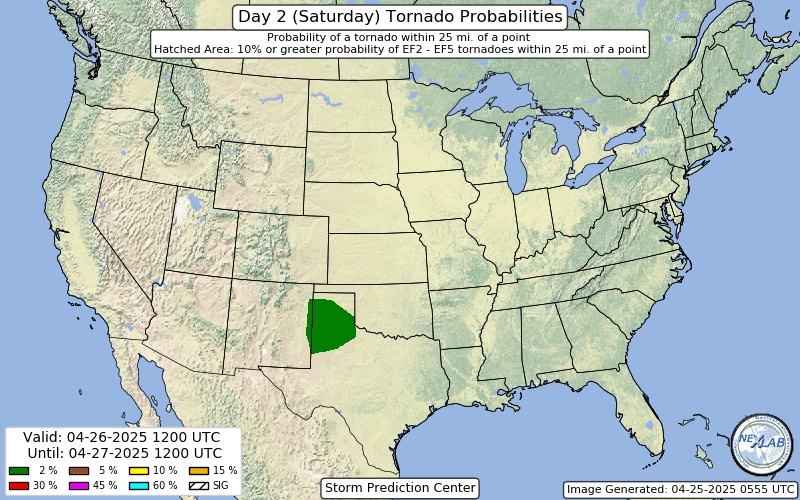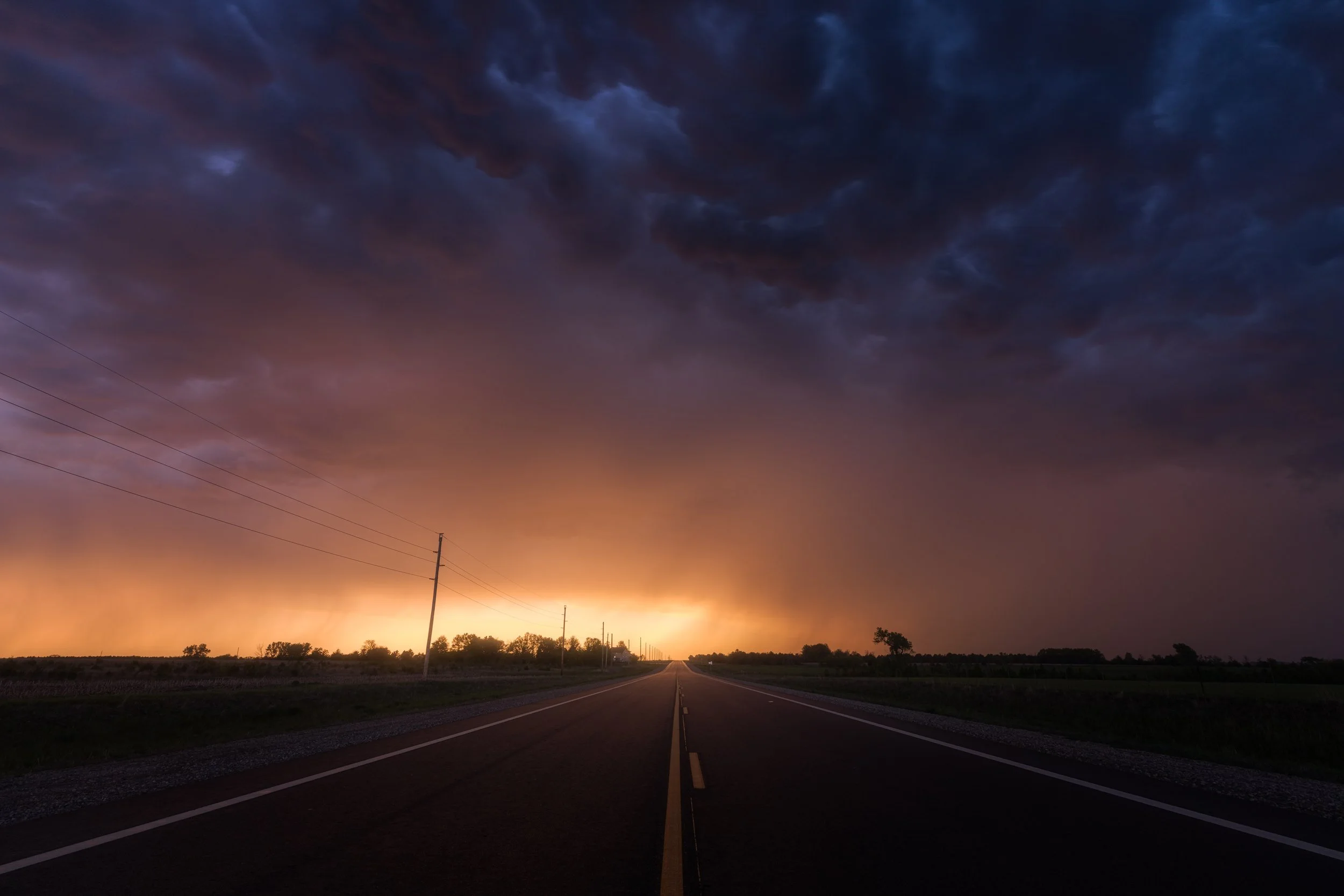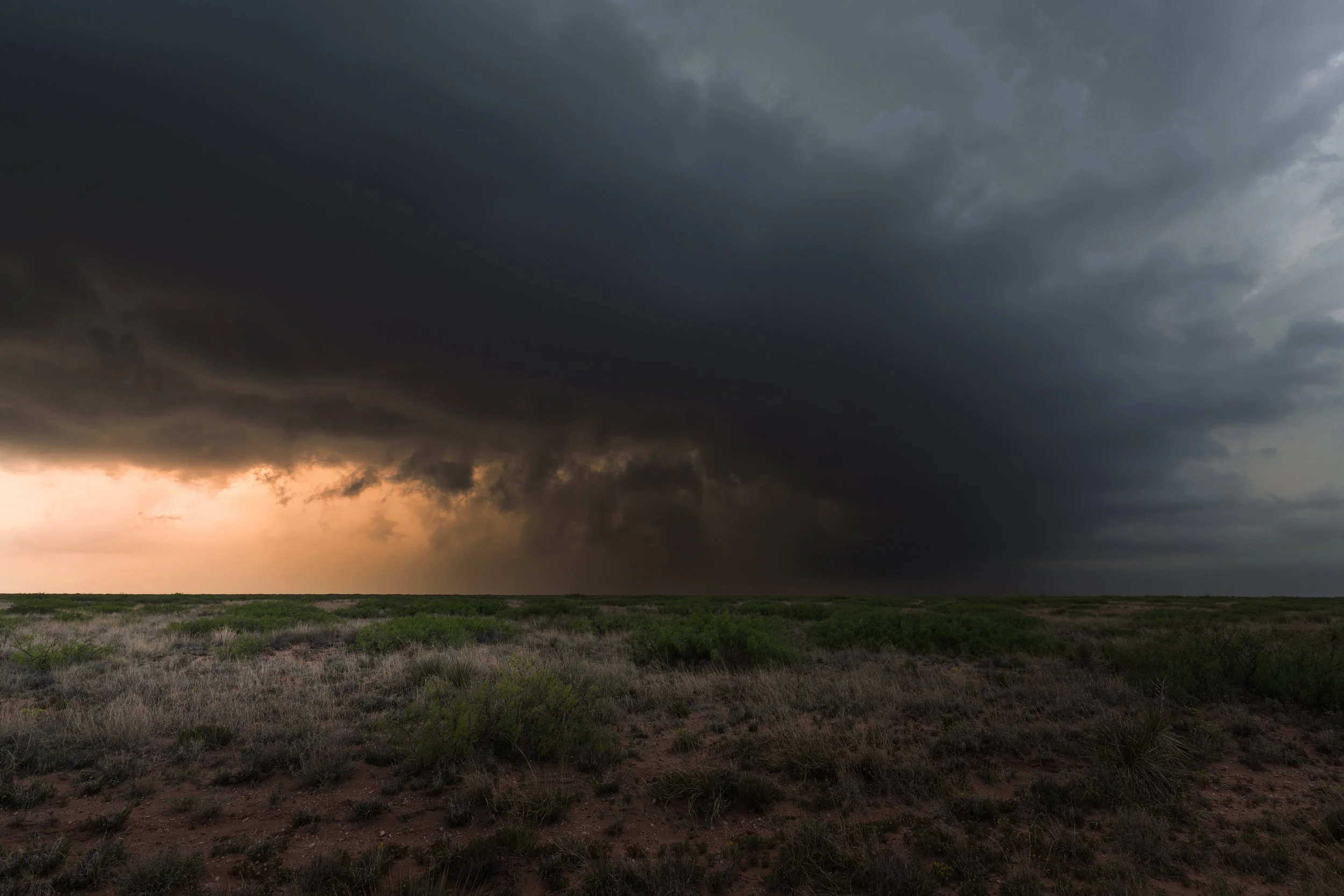Chasing Chaotic Light
When I began exploring photography nearly ten years ago, the first subject that I sought out was severe weather. Any moment of turbulent skies had me racing to the nearest clearing in Wisconsin in the hopes of capturing scenes of lightning, rainbows, hail cores, supercells and the holy grail: tornadoes. Ten years later, I’m still racing to find these skies, though far beyond just Wisconsin. I’ve now chased storms in over 16 states, driven tens of thousands of miles, and have witnessed over 30 tornadoes since my first in 2019. Along the way, I’ve captured some of my favorite images of all time - ones that have me coming back each season for more.
I’m often asked why I find storms so fascinating to photograph. I don’t feel there’s an exact right answer other than saying it’s entirely unique every single time. No storm is the same, and with that comes a challenge each time to capture the most unique light imaginable. What’s not to love about that?
In this blog, I want to share the process of a storm chase from start to finish. This includes analyzing models, planning out routes, packing the right gear, life on the road, actively chasing and shooting, and adjusting for last minute shifts. Whether you're curious about what storm chasing can look like behind the curtain, or the stories behind capturing storm photography, I’m going to cover it all.
Before anything else, I want to emphasize safety is the top priority when chasing storms. The environment can turn dangerous fast, and no photo is worth putting yourself or others in harm’s way. I highly recommend taking a SKYWARN Spotter Course to learn how to read storm structure and stay situationally aware if you decide to try storm chasing. If you’re new to chasing, go with experienced chasers if possible, and/or try to avoid going alone overall. Having a second set of eyes (and hands) on the road makes a huge difference when keeping your head on a swivel. Even with my experience, I always look to team up with fellow chasers to maximize safety and brainpower. No storm or image is worth the cost of being safe at all times.
With that being said, let’s recap the full process of how my chase trip of April 26, 2025 came to fruition, and how I managed to score some of my favorite images of the 2025 storm season so far.
Rewinding the clocks back to the week of April 21st, the Storm Prediction Center began highlighting some areas of interest for severe weather near the Texas Panhandle. Additional model agreements from sources like the GFS (Global Forecast System), the NAM (North American Model), as well as other European models all shared the idea that severe weather could come into fruition later that week and weekend. With that in mind, I began clearing my schedule and planning out what kind of logistics would come into play to make a chase trip of this caliber happen. These logistics included drive time, hotels and lodging, vehicle choice, as well as who I’d maybe chase with. For this event, myself and two chasers from Illinois all sparked interest, and we set our sights on Texas for later in the week.
As model agreement kept rolling in throughout the next few days, our confidence continued to rise for a severe event that we’d be making the journey for. On Friday, April 25, we met in Peoria, IL and set GPS for Clovis, New Mexico. A seventeen hour drive was about to begin… and we needed to do it overnight.
Before I get too ahead of myself on the overnight drive, though, it’s important to note the additional packing that chase trips require. This includes ample clothing, maybe a cooler for food and drinks, a first aid kit, and camera gear. Lots of camera gear.
Whenever I’m chasing for multiple days, I refuse to leave much gear behind, if any at all. I’m an avid fan of the Epoch tripod. I use the Key Grip tripod for any video work I’m doing while out chasing. In the rare moments that I’m able to stand and watch a storm for more than five minutes at a time, Key Grip has been a fun treat when making stable video with beautiful panning motions. As for Epoch? It’s as rigid as I could ever ask. Quick deployment assures I don’t miss any moment, including scenes like this when fleeting storm light is at its best.
In addition to my tripods, I cannot stress the importance of a good circular polarizer filter. Storms offer the most dynamic skies you can find, and having a polarizer to increase the depth, color and contrast of your scene can take your photos to the next level in an instant. My HGX Prime CPLs are the first filters I pack when refreshing my backpack. What about for video, though? Oftentimes when I’m trying to shoot 4K 24fps, bringing down my shutter speed to 1/50s is a struggle. That’s where my ND filters come in. Subtracting light helps regulate my settings and if I choose to use ProMaster’s HGX Prime VNDs, I have some fantastic flexibility that can assist in any scene - no matter the light in front of me.
In the rare instances that I’m not using either CPLs nor VNDs, I’m still using HGX Prime Protection filters. I can breathe a bit more knowing that my glass is protected from all the elements that storms bring up, including dust, dirt, debris (literally), rain, hail and more. In fact, earlier this season, my lens took a hailstone right to the front element and absolutely no damage whatsoever. No lens of mine is without a protection filter at any point.
When it comes to lenses, I continue to appreciate the versatility of Tamron. For wide shots that promote storm structure and lightning, I lean into my 17-28 f/2.8 Di III RXD. The wide aperture helps for lowlight situations which are common when storm chasing, and then for the more intimate scenes when I may be forced to zoom, I can rely on my all-in-one lens - the Tamron 28-200 f/2.8-5.6 Di III RXD. This has proven to be a force when shooting video, as well as different storm scenes with unique subjects. Both of these lenses complete focal lengths from 17 millimeters all the way to 200 millimeters without any missed gaps.
Anyway, let’s get back to the seventeen hour drive on our hands. When driving for chase trips, there’s rarely any luxury associated with it. You’re not stopping for nice meals, you’re not sleeping in late at your hotel, and you’re certainly not taking any leisurely detours along the way. Think of it like a business trip, and it’s important to treat it as such (at least for our car, we do). We enjoy the treats of gas station food, Redbulls, and a grand tour of some of the United States' greatest McDonalds if we’re lucky. Only after we score a tornado is when we treat ourselves to steak.
Once we made it to Clovis the following day, our jobs didn't stop there. Storms were only a few hours off, it was the perfect time to get gear dialed in. This included formatting cards, cleaning lenses, setting base exposures, and making sure everything in the vehicle was ready for rapid deployment once initiation kicked off. As our boundary sharpened and the cumulus field thickened, we locked in on our target area just to the east of Fort Sumner, where models and instincts were starting to agree on a supercell firing up in the late afternoon.
As we drove west, our cumulus field began to deepen and distant updrafts began filling our sky. It was only a matter of time before one or two of these updrafts took over and laid the groundwork for what would eventually become our storm(s) of the day.
As we sat and watched this storm develop, I prioritized the slow motions by setting up a timelapse of the growing updraft. Armed with Epoch, my 17-28 and a deeper blue sky courtesy of my HGX CPL, I let things corkscrew for about 20 minutes, staring at radar to see what our next move would be. Eventually, another storm to our south became the dominant supercell of the day. Assuming our storm was lacking some atmospheric juice for anything more, it was time to make our decision: dodge some hail and with road networks, race our way south in the hopes of something even better, or bank on our storm finding some new strength and continue its slow rumble across the open fields?
We decided to abandon our storm and race south, and it wouldn’t be long before we knew we had made the right call. Once we made it out in front of the now-tornado-warned storm near Roswell, we finally made some distance to pull off and photograph our new scene in all its glory. Unfortunately, no timelapse this time, but a chance at some unbelievable sunset light made way for a dynamic scene of storm structure and orange glow. The perfect scene if you’re a storm photographer.
Remember what I was saying earlier about Epoch? I need to shout out the stability of this tripod once again. The surface winds in front of this storm were easily 15-20mph with even stronger gusts. My Epoch tripod never budged to the point that I was able to shoot this image at 1/4s. This was something that if attempted handheld, I simply could not do.
As daylight faded and our storm retreated, we began our drive to Lubbock, Texas, for a late night arrival to our hotel. The promise of a bed after an overnight drive felt like a reward too sweet for words to express. With all that said and done, though, we felt it was worth the haul. Even without a photogenic tornado to capitalize on the structure-filled day, my dad likes to tell me, ”A bad day of chasing is better than a good day of work.” When it comes to the overall drive (figuratively and literally) of storm chasing and storm photography, experiences like this are not uncommon. Excruciatingly long drives with short windows of high rewards make this one of the greatest boom or bust subjects of photography. Without question, though, the booms are massive, and hard to ignore once you find the interest.
Trips like April 26 remind me why I keep coming back. It’s the chase itself - the hope, the planning, the split-second decisions and the fleeting moments of light that fuel this passion year after year. Here’s to the next setup, the next photogenic horizon, and the next time chaotic light finds its way through the clouds and my lens.
Charlie Kruschek
This post was written by Charlie Kruschek. Landscape photography is Charlie's true passion, chasing everything from storms to sunrises. Standing humbled before nature's raw power and in awe of the world's subtleties, Charlie's goal is to preserve heart-skipping moments of natural light, focusing on an emphasis of time. Charlie attempts to share his imagery as a method of inspiring others to appreciate life's beauty through a different optic and the fragility of each second.












